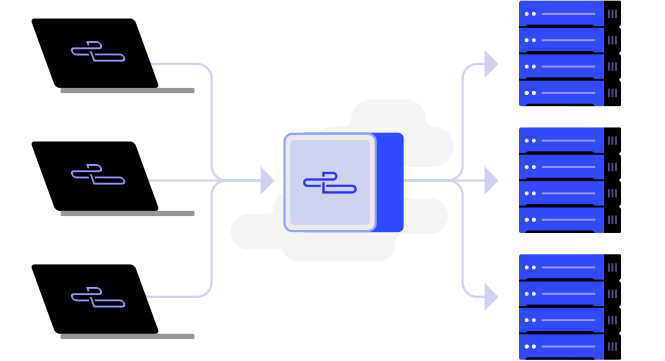Managed Load Balancer
Quickly build resilience and increase the capabilities of your application by employing load balancing. With an easy setup and flexible configuration, you could be running stronger than ever in minutes!
Quickly build resilience and increase the capabilities of your application by employing load balancing. With an easy setup and flexible configuration, you could be running stronger than ever in minutes!

Built for ease of use

Create a fixed point of entry to your application and never worry about updating DNS records again.
Configure front and backends exactly as you want. Keep your services and resources organised and private using our unlimited SDN Private Networks.
Load Balancer benefits from our Network Transfer Pool allowing you to forget about data transfer costs and focus on developing your applications.
Plug-and-play with any existing SDN Private Network or easily set up new. Load Balancer fits great in front of any application or service.
Hosting multiple secure domains couldn’t be simpler. Built-in certificate management lets you easily import existing SSL certificates which can then be assigned to the right frontend as needed.
Be always on top of the load on your services and resource usage with the included health and connections monitoring.
Ideal solutions
The most common use case for Load Balancers is exactly what the name implies, distributing the incoming connections between 2 or more backend application servers. Using the customisable load balancing methods from roundrobin to least connection, you can make sure your application servers share the workload appropriately.
While common solutions of load balancing allow developers to build resilience in the backend, the load balancer itself can often become a single point of failure. Not so with UpCloud’s Load Balancer! Not only does the Load Balancer benefit from our N+1 redundancy, but it also allows running two concurrent Load Balancer nodes for the ultimate resilient cloud infrastructure!
Load Balancer enables easy SSL usage via built-in certificate bundle management. Just drop in your SSL certificates and enable HTTPS connectivity. Furthermore, the frontend configuration rules allow fine-grain control of incoming requests akin to a firewall. And behind the Load Balancer, all traffic is secured using our SDN Private Networks.

Load Balancer offers two plans to support developers and large businesses alike.
Start to build your application or just test out the service with an affordable Development plan. Then when you are ready to go live, simply scale up to Production for high availability!
€10
per month
€30
per month
Got questions or looking for more information? Check the fequently asked questions here or head over to our documentation pages for more.
Managed Load Balancer currently supports round robin only. Other algorithm options will be added later.
Yes! Your Load Balancer instances will fully benefit from your network transfer capacity bundled with your other cloud services.
Load Balancer uses our SDN private networks for connecting to the backend servers. As such, it is currently limited to working within any single data centre. However, as we develop the SDN functionality, cross DC connectivity will become available.
Updates are performed as rolling updates, meaning zero downtime for multi-node services.
Resources
UpCloud’s Managed Load Balancer allows users to create a fixed point of entry for services and applications that is able to distribute incoming connections. Using the Managed Load Balancer enables users to build resilience and increase the scalability of web applications with an easy setup and flexible configuration. Managed Load Balancer can be configured using […]
Load balancing
Sharing work between multiple members of a group is a true and tested method for improving efficiency. However, rarely is it this quick and easy to accomplish by simply configuring Load Balancer! Managed Load Balancer empowers you to effortlessly build resilience and increase application throughput with simple yet flexible configuration. In this tutorial, we’ll introduce […]
Load balancing
Besides creating and managing Load Balancers, you also have the option to set up certificate management by creating SSL certificate bundles. The certificate bundles can then be easily applied to your Load Balancer frontends to enable HTTPS. In the Certificates section under the Load Balancer menu, click the Add certificates bundle button to get started. […]